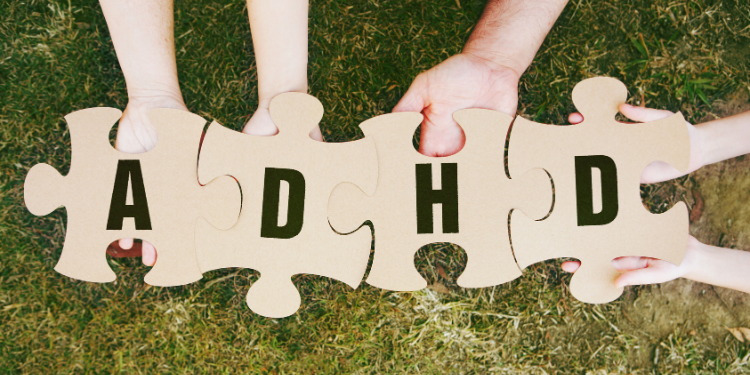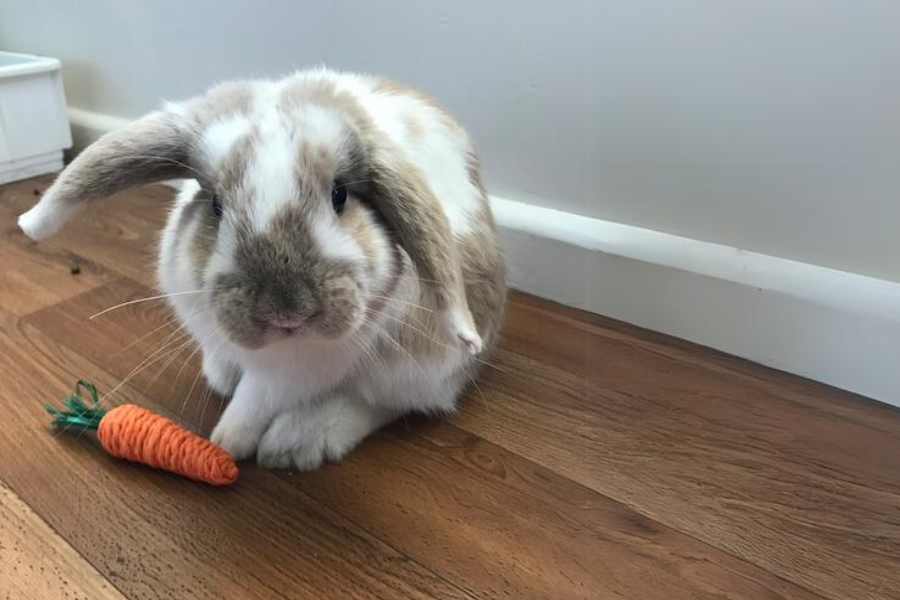You might be here because, along with the quarter of all Australians[1] who will experience an anxiety condition in their lifetime, you know first-hand the sense of dread and lack of control that is trademark anxiety. The purpose of this article is to answer some questions you may have: What is anxiety? What is an anxiety disorder? Am I anxious or just stressed? Is it possible to get on top of my anxiety? How are anxiety and depression related? What do I do with the Bible’s command to not worry when I can’t help but worry? What kind of help can I get from mental health professionals? Does God care about my anxiety?
You can read it from start to finish or jump it at a subheading that hits your specific area of interest. Either way, our prayer is that God would assure you of his nearness and love. Anxiety can be an isolating, crushing experience, but Jesus knows first-hand the loneliness of it. On the cross, Jesus meets us where we feel most at sea, most threatened, most fearful, and most lonely. May you find steps forward in these words, and a confidence that Jesus walks with you on this path through anxiety.
[1] See the statistics compiled by Beyond Blue. They use statistics from trusted references and research. To find these statistics referring to a quarter of all Australians, choose the General statistics category.

Anxiety: What is it? and What is it not?
Anxiety seems to be talked about everywhere. In the news, in professional learning, across industries, in school curriculums, and of course, in our private conversations. Though it is a frequent topic of discussion, when it comes to defining anxiety, we are met with a problem of language. Colloquially, anxiety is often used interchangeably with terms like stress, worry, fear, over-concern, and not trusting God. In this murky blend of concepts, it can therefore be difficult to pin down what anxiety is in your experience of it, and to know when and how you should seek some help.
In this section, we have two guiding questions that will move us toward clarity:
What IS anxiety, and what is it NOT?
What is going on for you in YOUR experience?
1. Anxiety is NOT stress, but they are interrelated.
We often hear ‘stress and anxiety’ roll off the tongue together, and for good reason. Often the symptoms considered as signs of stress, such as sleeplessness, a pounding heart, feeling worried and tense, are the very same signs of anxiety! Understanding the distinction between stress and anxiety is important because when we are sleepless or on edge due to stress we can resolve the issue differently than if we’re anxious.
One way to visualise the interrelationship of these two concepts is that anxiety is to stress what fuel is to a car engine. That is to say, stress is a complex machine made of lots of parts working together for a certain purpose, and anxiety is an ingredient that moves through the machine to help it go. Indeed, anxiety is not necessarily a bad thing! We’ll come to this soon, but first let’s start by looking at the complex machine: stress.
Stress is our body’s reaction to a change or challenge in our environment. At the start of the day our bodies wake thanks to a surge of cortisol[1], commonly known as the ‘stress hormone’, and from that moment we are under varying levels of stress until we sleep. Upon waking, our senses deliver stimuli to our now alert brain, and we are required to respond: our muscles need to activate and coordinate themselves to get us out of bed. There may be household members who want our attention; perhaps we need to engage with people via our devices soon after waking. And usually, our minds are already gearing up for what we anticipate the day to hold.
Though often referred to as a negative part of our experience—for example, ‘I’m stressed out!’—the ability to respond to stressors is an inescapable, necessary, and even wonderful part of our body’s design. Our stress responses are generated by the autonomic nervous system, a complex combination of nerves, hormones, and other chemicals. We need this system for survival as we adapt to and actively shape the ever-changing circumstances of our lives. We need this system for performance, as we strive toward goals that bring meaning to our lives.
In fact, too little stress—or put another way, an environment that requires very little from us—can be stifling to our health and happiness. And of course, too much stress, or an environment that is demanding too much of us, can be stifling too. The space between these two poles represents a sweet zone where stress actually gets the best from us.
An important feature of our autonomic nervous system is that it has two halves. The first half is the sympathetic system, or the ‘fight or flight’ response, and the second half is the parasympathetic system, or the ‘rest and digest’ response. These systems work inversely, so that when we are in fight or flight mode, the rest and digest response is turned down, and vice versa.
Suppose someone standing behind you at a distance shouts your name. You turn and see them throw something quickly in your direction. In an instant—even before you have processed what you have seen—your brain will signal a release of adrenaline that sets off immediate changes in your body: your heart rate and breathing will speed up, your blood pressure and blood glucose level will increase, and blood will be redirected from your digestive system to your muscles so that you can attempt to catch the object (fight!) or get out of the way (flight!).
This is the sympathetic system doing its job to protect something you value at a deep level (your safety from harm). This system is active during our waking hours, enabling us to tackle what comes our way, be it flying objects, social interactions, digital notifications, or travelling from one place to another, to name a few examples. It’s remarkable to consider just how engaged our bodies are in all the activities of the day, while our minds are often busy with other concerns at a conscious level.
Once a challenge has passed, our body’s rest and digest response acts like a brake, dampening the surge of hormones that enabled us to fight or flee and taking us back to a baseline level of functioning. It also deals with various ‘housekeeping’ tasks that keep our body working well, including digestion and temperature balance. Read: we need to let our bodies rest to stay healthy and optimally primed to rise to the challenges of life.
So, we’ve established that stress is essential to being awake and living life, that it is physiological in nature, and that a healthy stress response system regularly shifts between fight/flight and rest/digest modes.
REFLECT: What is going on for you?
As mentioned already, high levels of stress can be very uncomfortable. Some common signs of stress[2] include:
Muscle tension or jaw clenching
Headaches, dizziness or shaking
Exhaustion or trouble sleeping
Stomach or digestive problems
It’s not fool proof, but a possible way to work out if your discomfort is because of STRESS rather than anxiety is to ask the question:
If I changed the situation in some way, will I feel calmer?
This question flows from our definition of stress as a physiological response to a change or challenge in your environment. When you are stressed, there are two options for changing the ‘situation’. First, you can change something externally in your environment. For example, I remember a very stressful drive to an event where I had to give a presentation, and traffic was moving at a painfully crawling pace. I had a headache, my hands were shaking, and my thoughts were racing through my options—which turnoff to take, how to contact someone at the event, and so on!
STOP. “I’m stressed,” I thought. TAKE A BREATH. I took a breath. And suddenly noticed how loud the radio was blasting. “That’s not helping,” I observed to myself. So, I made a change to my environment and turned the radio off, which took one load off my stress response system and helped me think more clearly about what I needed to do to get there on time.
The second way you can change the ‘situation’ is by internally accommodating to the environment. An example I regularly experience is dealing with crying or complaining toddlers. It’s astounding how much your ability to perform basic tasks diminishes in the presence of relentless whinging! So long as they’re safe and not in urgent need, I’ve learned that I’m often able to consciously choose to demote the importance of the foghorn blasting me for a response and raise the urgency of the task I’m trying to complete. Another example might be shifting your expectations on how something should go, for example, accepting that arriving late is not the worst possible case and even a tolerable one, as in my stressful drive above.
If your answer to the italicised question above is, no—no matter what I change or do I cannot feel calmer, then perhaps you are experiencing ANXIETY rather than just stress.
When lockdown ended in 2021, I found myself getting stressed at seemingly small things: for example, an innocuous invitation to lunch with a friend had my heart pounding and mind flooding with an instinct to bunker down and protect my calendar from intrusions bombing in. After a couple of weeks of heightened stress—and telling myself, “You’re just stressed at all the changes!”—it occurred to me that I couldn’t make the churning in my gut leave no matter what I did. Bingo: I wasn’t just stressed—I was experiencing anxiety. With that epiphany, I found some close friends who could patiently help me process on my thoughts and feelings and employed a few other strategies (keep reading!) to help get past the anxiety.
Can you relate? Then let’s move onto building an understanding of anxiety.
[1] For more about this, read ‘Avoid the endless trap of excess cortisol and sleep loss’.
[2] You can read this to find a helpful list of common signs of stress.
2. Anxiety IS the emotional component of our body’s stress response machine.
Put very simply, anxiety is an emotion. Of course, this is not to say that anxiety is a simple emotion! Quite the opposite. It is hardwired into our stress response system and therefore has a very physical expression. Let me share a personal moment of heightened anxiety that illustrates how this emotion operates within our stress response machinery.
I was in a Bunnings carpark, strapping my two-year-old into the car while my baby daughter waited in the pram next to me. As the belt clicked into place, I turned to grab the pram, but instead got a handful of air! My heart leapt out of my chest as I looked up to see her rolling away, already a few metres from me, and a van on course to collide with the pram. I yelled and immediately ran to rescue her—thankfully, the driver had also seen us and slowed down in time! It all happened in an instant, but it took a while for my heart rate to decelerate and the tremble in my hands to settle.
In that moment a cascade of physiological responses was triggered in my body, priming it for an immediate burst of energy and strength to respond to a challenge. On an emotional level I experienced a flood of anxiety—you could call it emotional hijack—where my mind was consumed by the imminent threat to something I valued highly. A fire alarm was triggered in my head, I identified the ‘fire’ threatening the life of my child, I leapt to action, the fire was ‘extinguished’ (thanks not only to my stress response, but the driver’s as well), and after a minute or two, the fire alarm in my mind was silenced and reset for the next emergency.
When you think about your own experiences of anxiety, you might notice a similar theme: anxiety is often triggered when we sense a threat to something we hold as significant. The object in question may be someone you love, as in my example, but it could be all sorts of other (potentially valid) things, such as reputation, a sense of security, an envisioned future, comfort, success, or a material possession.
Also, the threat in question might be less concrete or imminent than in my story. For example, the possibility of negative feedback on a piece of work may be keeping you up at night because it threatens the esteem you enjoy from your boss or a pathway to success. In this case, though you can’t literally see a vehicle about to wipe out your prized thing, the emotional hijack can be just as strong.
Anxiety is also triggered when we anticipate the Worst Case Scenario. This is where our fire alarm may be a little too sensitive and is set off without sufficient cause. Imagining the disapproval of your superior might be enough to spark a level of anxiety disproportionate to the actual risk, where it feels as if your greatest fear will most certainly be realised.
In this moment, you are bringing the future threat into the present, and anxiety has hijacked your stress response system to do something about it. But because it’s a future threat, you can’t resolve it in the here and now. This leaves you with a smouldering fire of anxiety which is difficult to extinguish, and which depletes your ability to engage with the actual demands of the present.
Examining our thought patterns can be very helpful here. A tendency to catastrophise, for instance, can set off our anxiety fire alarm unnecessarily. If you want to read more on this, check out the Cognitive Behavioural Therapy part of the Treatment section below.
A third key trigger for anxiety is when we find ourselves in a situation that had a bad outcome in the past. Perhaps you have submitted work in the past that has received unfavourable feedback, which impacted your self-esteem and general wellbeing, or prevented you from getting through an important barrier in your career progression. It can take an incredible amount of awareness and often help from trusted others to rescript these moments, enabling you to switch off the fire alarm and navigate the situation with a greater presence of body and mind.
REFLECT: What is going on for you?
Of the anxiety causes explained above, what resonated for you? It’s possible that you have a sense of the specific triggers that get your anxiety fire alarm sounding, but it’s equally possible that you don’t. When anxiety becomes a problem, it can feel like it lacks boundaries or a precise reason for being there. Before getting to the bottom of why you have anxiety, it might help to feel out the shape of it. How do you know that you’re inappropriately anxious? What signs tip you off?
My carpark story is an example of anxiety serving its purpose: anxiety was triggered at an appropriate moment in a proportion that enabled me to act, and then the feeling retreated when the threatening event resolved. For the purposes of understanding problematic anxiety, let’s imagine that after that incident my anxiety didn’t die off. What would that look like?
It could look like spiralling thoughts about my lack of fitness to look after my kids and a mushrooming fear that I will drop the ball at a life-and-death moment again. It could look like muscle tension, a headache, or an inexplicable panicky feeling when I visit the Bunnings carpark again. It could look like irritability directed at others when I’m in a similar situation of handling the kids near traffic.
Problematic anxiety can manifest in a range of physical, emotional, and behavioural ways. Here is a non-exhaustive list from the Black Dog Institute. Why don’t you write down the signs that you’ve noticed in your own experience of anxiety? There may be others that the list hasn’t mentioned.
Are you feeling…?
Worried and afraid most of the time
Tense and on edge
Nervous or scared
Panicky
Irritable, agitated
Worried you’re going crazy
Detached from your body
Feeling like you may vomit
Are you experiencing…?
Sleep problems
Pounding heart
Sweating
‘Pins and needles’
Tummy aches, churning stomach
Lightheadedness, dizziness
Twitches, trembling
Problems concentrating
Excessive thirst
…or (my addition to the list): chronic procrastination
Knowing your tell-tale signs for anxiety—be they physical, emotional, mental, or behavioural—is a good first step in evaluating what kind of action you should take. It’s the kind of information you could take to your GP to start a conversation about your experience. If you’re uncertain about whether this is a legitimate complaint to bring to a doctor, try something like this: “I’ve been noticing these symptoms (A, B, C and D) and I think it’s because I’m anxious. What should I do?”
If your doctor has adequate training in mental health, they might try to understand the intensity and scope of your anxiety using a simple assessment tool and will have some next steps like a referral to a mental health professional. If you feel like you get nowhere with your doctor, ask around for another doctor who is good with mental health issues. It’s worth a second opinion, because anxiety can meet criteria for a mental health disorder. This is where we turn next.
3. Anxiety IS a clinically defined mental health condition.
Sometimes anxiety can reach a level where it meets criteria for an anxiety disorder. In general, a mental disorder is a change in thoughts, emotions or behaviours that prevents you from being able to engage in relationships, work, and leisure in the way you normally enjoy. Is anxiety getting in the way of you living life?
There are a range of anxiety disorders, defined by the triggers and nature of anxiety experienced by a person. These include:
Generalised Anxiety Disorder (GAD): intense, persistent worry for more than 6 months
Social Phobia: extremely fearful or anxious when exposed to unfamiliar people or think you’re being judged by others
Panic Disorder: recurring panic attacks
Specific Phobia: strong fear or anxiety towards a specific object or situation
Separation Anxiety Disorder: inappropriate and persistent fear about being separated from people you’re attached to
REFLECT: What is going on for you?
Is anxiety affecting the way you engage in relationships, your work, or your leisure? Or, for that matter, your experience of God and church?
As mentioned, talking with a GP (especially one who is engaged with mental health issues) is a great place to start if you are regularly feeling a high level of anxiety. Talking with a trusted friend or mentor could also help, as these people know you more intimately than a doctor and may have useful feedback on what they’ve been noticing in you.
4. Anxiety CAN BE the result of chronic stress.
Earlier, we looked at the interrelationship between our stress response system—our body’s way of responding to changes and challenges in our environment—and anxiety, the emotion operating within that system.
If you’ll recall, our stress response system has two modes: 1) fight/flight, and 2) rest/digest. When one is dialled up, the other is dialled down in the same proportion, and we’re meant to move between the two modes regularly. The whole system is built to cope with acute (short-lived) stress, which can include contained time periods of stress, but struggles and even deteriorates when we are stuck in fight or flight mode and can’t properly rest. This is chronic stress.
Circumstances that might lead to chronic stress include:
a relentless workplace,
ongoing sleep deprivation,
financial insecurity,
managing long term health concerns in yourself or a loved one,
having to constantly adapt to shifting circumstances (like, in a global pandemic…),
or boundary-less use of technology.
Additionally, chronic stress may not be the result of any one circumstance, but the frenzied cultural water we swim in. John Mark Comer compellingly emphasises how “hurry sickness”—an urgency to squeeze in more than humanly possible in the time we have at our disposal—has led to high rates of chronic stress and anxiety across Western societies and an erosion of our capacity to engage with God.
Chronic stress is associated with a myriad of short- and long-term health problems. Included among them are anxiety and depression. Let’s put a magnifying glass on chronic stress and anxiety and depression.
If you reflect on your own experience, you may notice that your anxiety varies in size and intensity at different times. Sometimes you are resilient to stressors, you can keep worries in proportion, and you are not monitoring for threats. And then at other times, seemingly small stressors can send you over the edge, your worries can dominate your thoughts, and you are scanning the environment for threats coming in.
How can we make sense of this spectrum of coping?
Psychologist Dr Dan Siegel described a framework called the window of tolerance[1], suggesting that we all have an optimal zone of ‘arousal’ where we function and deal with daily stressors effectively. In this zone we are in an alert and calm state; thinking and feeling can happen at the same time. Sometimes, like when we are chronically stressed and have little chance to reset our stress response system, we can be pushed outside of our window of tolerance.
In these moments we can go up in a state of hyperarousal: anxiety is in full flight, we are ‘stuck on’ and have all our defences engaged, we find it difficult to sleep, and our thoughts are spiralling. Or, we can go down in a state of hypoarousal: we display symptoms more in line with depression such as numbed feelings, lack of energy, shame, and an inability to think or respond.
And it’s also common to experience a combination of both hyper- and hypoarousal at these times. It’s like we are bouncing uncontrollably across our window of tolerance and can’t get a handle on our reactivity. Though they seem like opposites, anxiety and depression are connected because they are both predictable responses when life becomes too much.
REFLECT: What is going on for you?
Are you experiencing chronic stress? It’s often the case that when we hit breaking point, we are not able to make creative, strategic decisions that help us get out of or adapt to the circumstances. So, STEP ONE is to ‘defibrillate’—what do you need to do to get some immediate respite, such as a decent night’s sleep? STEP TWO is to find support—who can help you evaluate your situation and workshop ways to change things that will lead to better coping?
Where are you in your window of tolerance? Are you generally coping with life, or have you noticed anxious or depressive signs presenting more frequently of late? What are your ‘red flags’ (thoughts, behaviours, emotions, physical symptoms) that tell you you’re at your limit? Do you typically go up in a state of anxiety, down with depression-like symptoms, or a combination? And what does thriving look like for you?
[1] Dan Siegel’s window of tolerance.
5. Anxiety is NOT the same as reasonable concern.
Perhaps this goes without saying. The challenge, when we are highly anxious, is working out where the threshold is, marking the end of reasonable concern and the start of over-concern. The Bible’s teaching on worry can help us out here.
Indeed, the Bible does talk about worry a lot! Helpfully, it does not discourage worry in every case, but sometimes condones it. In 2 Corinthians 11:28 the apostle Paul speaks about the daily pressure of his “concern” for all the churches, which is the same Greek term that he uses in Philippians 4:6 (“do not be anxious about anything”) and the same term used by Jesus in Matthew 6:25 (“do not worry about your life”).
Therefore, the Bible gives some space for the possibility that worry/concern/fear can be an appropriate and proportional response to a circumstance. As Paul’s concern for the churches suggests, there is something about this kind of worry that flows from a love for others. To not have appropriate concern for those we’re in relationship with—to be completely ‘laid back’ and indifferent—is to not love at all!
In fact, you could possibly map this idea of ‘appropriate concern’ onto the ‘appropriate anxiety’ demonstrated in my carpark story above—the kind of anxiety that floods our system in moments when we need to protect something important.
Certainly, it takes some wisdom to discern where our concern or anxiety is appropriate and not over-concern. Pastoral care writer, Timothy Lane, suggests this rule of thumb:
[Godly concern] leads to wise action and dependent prayer.[1]
REFLECT: What is going on for you?
In your worries, ask yourself: am I able to respond non-reactively? This is especially challenging where your actions are not able to solve the problem.
Also ask: when I worry, is my reflex response to pray? If the answer is yes to these questions, then in this case you are likely dealing with reasonable concerns and not over-concern.
If you have failed this litmus test, take heart, and keep reading. God’s Word is both clear and abounding in grace when it comes to the things that burden us.
[1] Timothy Lane, Living Without Worry: How to replace anxiety with peace, 2015, p. 20
6. Anxiety IS a spiritual issue, as well as physiological, psychological, and emotional.
We’ve established that, according to the Bible, some concern or anxiety—at the right time and in the right proportion—is a good thing. We turn now to the kind of worry and anxiety that transgresses the boundaries of ‘appropriate’: let’s set up camp in the spiritual heartland of worry.
Worry reflects something that is broken in us on a spiritual level. We know this because the most repeated command throughout the whole Bible is “Do not be afraid”[1]. There is something at stake in our relationship with God when we are anxious.
Timothy Lane helps to define the kind of worry the Bible commands us to not engage in:
Worry, or over-concern, thinks and acts as though everything is up to you, or completely out of control, and prays desperately, if at all.[2]
Put another way, our worries or fears often betray a functional belief that we are in control, or at least, that God is not.
Fear and awe are two sides of the same coin, such that our greatest fears reveal what our hearts are in awe of, what they love. Perhaps it’s the approval of others, perhaps financial security, perhaps certain pleasures, perhaps winning in the competitions of life. It is said that the human heart is an idol factory. There are no limits to our ability to displace a reverential love for God with something in the created realm. The tragedy of idolatry is that these things cannot give us the life and fulfilment we seek, but instead, ultimately consume us and make us less than what we were created to be.
So, it stands to reason that the Bible keeps telling God’s people to not fear—God is jealous for our affection because he alone is worthy!
REFLECT: What is going on for you?
Tune in to your internal reaction to the words you’ve just read. Are you feeling conviction, defensiveness, cynicism, defeat, numbness, or something else?
Pause on that feeling and say to yourself, isn’t that interesting. That feeling means something.
Here is an opportunity to pray honestly. No matter where your heart is at—whether convicted of sin, defensive of things that God doesn’t seem to care enough about, cynical and hardened by the insensitivity of other Christians around your anxiety, defeated by the bodily and psychological experience of anxiety, or emotionally blocked up when it comes to God—he wants to hear it.
Do you believe me? Since the Bible is so insistent that we shouldn’t worry, surely God must find our anxiety utterly tiresome! How can we know God’s posture toward us in our anxiety?
[1] Scotty Smith, ‘A prayer about God’s most repeated command’ 3 October 2011
[2] Timothy Lane, Living Without Worry: How to replace anxiety with peace, 2015, p. 20

What is God’s Posture Toward Us in Our Anxiety?
Let’s dive into a Bible story that features some intense fear to find out.
Mary Magdalene and the other women tread a quiet path toward the tomb. The air is cool, the sun barely up. With anointing spices in arms and aching hearts in chests, their march is one of grieving devotion. But when they arrive, they are stunned to find the precious body of their Lord—stolen! And entering this bewildering scene appears an angel, wearing clothes that “gleamed like lightning” (Luke 24:4). Can you imagine the confusion and fright they must have felt in this moment?
“Do not be afraid,” says the angel to the women, in Matthew’s retelling of this event. What a thrill for the angel, to share this incredible news for the very first time: He is risen! Look, see the spot where he lay, no body, just his clothes, he said this would happen, stone rolled away, unconscious soldiers… it all adds up! With too much to process the women hurriedly depart and find themselves suddenly in the presence of Jesus himself, though it takes them a moment to realise it’s him. “Greetings… Do not be afraid.” (Mt 28:9, 10) Jesus echoes the angel’s command to the women as they fall to his feet in wonder and worship.
This is where you and I should bring our fears, worries, concerns, and anxieties: into this garden, just a few paces from an empty tomb and some burly, unconscious Roman guards. Drop those fears right at Jesus’ feet and listen for the warmth, the invitation, the love in his voice when he says to you, “Do not be afraid.”
The resurrection is how we can have confidence that no matter how dire or frightening our circumstances, God is bigger. The story ends not in death, but life. And the resurrection is how we can have confidence that God loves us when we are anxious. Consider the lengths he was willing to go to rescue us from the black hole of death that undergirds all our anxieties.
His posture toward you—no matter the concern you drop at his feet—is neither anger nor superiority, but wholehearted, tender embrace.
Alison Courtney holds a Master of Arts in Counselling from Gordon-Conwell Theological Seminary in Massachusetts, USA. She is also a secondary school teacher with pastoral care experience in Christian education. Presently, most of her time is spent raising two young children. When spare time occasionally presents itself, Alison enjoys making art.




